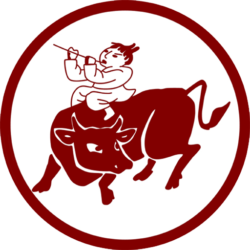The great teachers: Bill Palmer, the master of Shiatsu with a big heart
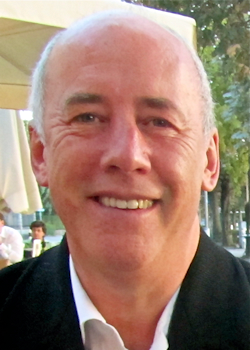 When you think of the Shiatsu in England, two names immediately come to mind: the East-West Center and Bill Palmer. It is this English Shiatsu giant that we are delighted to present: a longtime teacher, co-founder of the UK Shiatsu Society and a passionate and tireless researcher on child development. Bill Palmer gives us here a great part of the history of the Shiatsu of the United Kingdom and the exciting results of this research on children.
When you think of the Shiatsu in England, two names immediately come to mind: the East-West Center and Bill Palmer. It is this English Shiatsu giant that we are delighted to present: a longtime teacher, co-founder of the UK Shiatsu Society and a passionate and tireless researcher on child development. Bill Palmer gives us here a great part of the history of the Shiatsu of the United Kingdom and the exciting results of this research on children.
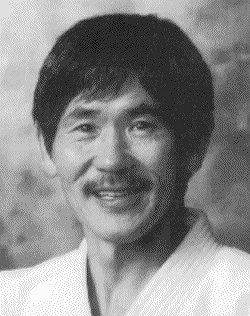
Ivan Bel: Good morning, Mr. Palmer. My first question will be where and when did you discover the shiatsu?
Bill Palmer: It was in 1973 when I was in university. I began practicing Aikido. My teacher was also an excellent shiatsu practitioner. His name was Minoru Kanetsuka, and I liked what he did. Also, I started the study with him. For 6 years, I watched what he was doing and then the dojo people were asking me for treatments. So, my beginnings are very related to aikido and the spirit that prevails in a dojo. It was a very simple form of shiatsu, without any theory on the meridians.
Was it like the basics of the school of Shiatsu Namikoshi?
No, actually it was even simpler than that. The practice was based on key points and quality of touch. Kanetsuka used to say: “Shiatsu is like aikido. Do not try to control anything. Simply improve your touch quality and respond to what you feel “or” If you open yourself up to someone’s energy, then it transforms it, but if you try to change it, then it resists. ” So what I have learned is to have confidence in my feelings, not to think about what I should do, to work on myself to open myself up to people.
After these years of introduction, have you continued your way into the shiatsu?
Certainly yes ! In 1978 I started studying shiatsu with Akinobu Kishi. At that time he taught Zen Shiatsu in Paris, before he developed the Seiki. There I studied the works of Masunaga, which allowed me to know more about the theory and the meridians, but I never really agreed with the idea of diagnosis. The diagnosis has something medical where an expert judges what is bad and decides what to do to make it good. The client can feel good through the treatment, but he does not understand what is going on, so I’m not sure if there really can be any transformation of his deep patterns. For my part, I like to work by developing the customer’s attention through touch, opening myself to him and helping him to explore himself.
Did you go to Paris to study with Kishi?
I studied briefly in Paris, then returned to England. There I attended several courses where Kishi and other professors were invited to London.
So after that period you started working as a professional?
Not yet. At that time there were not really shiatsu professionals. It was very new! We were perhaps less than ten practitioners in all of London. So most of us met every week and we taught each other what we knew. In this group there were only people who had studied directly with the Japanese professors. Michael Rose studied with Masunaga, Carola Beresford-Cooke with Ohashi and Harriet Devlin with Kishi. For their part, Merle Gering had studied acupressure and Neil Gulliver the Macrobiotic Shiatsu. So we were a broad-spectrum group, so to speak, whose object was the sharing of our knowledge. Michael, Harriet and I started teaching groups of people who were interested but we did not have the idea that we were training people to be professionals – the classes were more like self-exploration through touch and movement.
Was it the beginnings of the UK Shiatsu Society?
Yes nearly. In December 1980, we celebrated Christmas at the October Gallery in London, and all the students of our classes and those of the East-West Center were invited. There, the students told us “we want you, the teachers, to form a Shiatsu Club, that we can meet and exchange”. It was not a matter of professionalism, we did not think of that, but just to practice and work together. Also, the following year we created the UK Shiatsu Society, which quickly developed into a professional association. The schools started to offer extensive training and the club became an organization responsible for maintaining the quality of the courses and supporting training.
When did you start working with the shiatsu?
Well, in the 1970s I was doing research in theoretical physics at London University. One day I looked at the people around me and I said “I do not want to end up like them” (laughs). I was becoming more and more autistic, always locked in my head, and realized that I needed to be more with people than with ideas. As a result, I left academic life and worked in a theater school in London called the Central School of Speech and Drama. It was in this theater school that I really started working with shiatsu, even though it was not the job I was paid for. Students were often injured in class and asked me to help them. So, I had at least a dozen people a day for the shiatsu, in small sessions of 20 minutes. Later, they asked me to teach Shiatsu at this school.
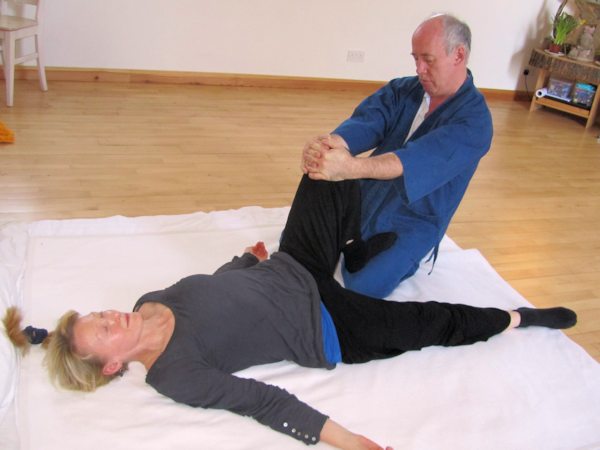
I was there for 5 years and developed a new style of Shiatsu, “Movement Shiatsu”. Then, after an extended trip to Japan, I opened my own school. That was 30 years ago! “Movement Shiatsu” developed from the principles I learned from Aikido, but especially from a long period of work with children with disabilities. Working with these children, I noticed that they were disempowered by the therapies they received. Disabled children were mainly treated by physiotherapy which wanted to make their bodies as “normal” as possible. But the only result was that the children felt that basically something was wrong with them, as a person. From my side I told myself that everyone, and not just children, needs to feel good and whole. Only then can they explore areas where they have problems without losing their bearings.
I started working with these children first all they could do easily , rather than focusing on their problems. It was a real success! The sessions brought them (and me too) a lot of joy and care. And from this joy and care, they found the courage to work on areas of their bodies more difficult to access. Then I thought I would do the same with the adults. People usually focus on what is wrong with them, instead of what is good in them. This is why the basis of the “Movement Shiatsu” is to explore the client’s capacity , rather than his or her incapacity . This helps the client to explore himself as he isand to cherish that. And only after this step, we explore how to develop areas that are problematic.

This is a complete change of point of view, because you see things in reverse of what is generally taught. Does this mean that you work in shiatsu only with mobilizations or do you also use the meridians?
That is a very relevant question. To answer it, I must first explain how I see the meridians, a vision that I have learned through working with babies. Babies learn to move by integrating reflex movements. And the way in which these reflexes ultimately form the movements of the whole body follow the path of the classical meridians, in a very precise manner. It is as if the meridians form an innate map that shows the brain how to join and use the body with the help of movements. This connection between the movements and the meridians is much more precise than the metaphor on the amoeba of Masunaga. It is possible to trace the muscle chains that create movements like crawling or rolling. Now these muscular chains follow exactly the meridians. It was an exciting discovery,
In the 1980s there was a lot of research on child development that showed that babies develop their personality through the way they learn to move. For example, the way of crawling reflects how they transform excitement into action: if they are attracted by a distant object, they begin to crawl to reach the object of their desire and get satisfaction. But in the act of crawling, the muscles that align the body to allow it to advance straight ahead follow exactly the meridian of the bladder and the small intestine. Together, they form the Taiyang meridian. Now think about what the child is learning with this movement; he learns that he can act upon his desires, obtain satisfaction by himself through movement and direct his will to attain what he wants. This is exactly what it is when we talk about the Qi of Taiyang – aligning action and intention and choosing what one really wants. In other words, it helps to develop a clear and precise will.
I was very excited by these observations, discovering that babies learn the movements through the meridians and that the energy talents that an infant discovers through these movements correspond to the movements of the Qi of the meridians. It was a satisfactory explanation of the meridians. Also, by “working with meridians”, I mean “process of body development from which you can rediscover the energy functions that have been lost or damaged.”
It’s quite impressive! How long did it take you to find out?
It took me ten years of researching with babies, filming them and analyzing their development before demonstrating that this link with the 12 meridians really existed.
When you speak of meridians, are they the ones we learn in the West (Bladder, Stomach, etc.), or the classical meridians that are studied in Asia such as Taiyang, Shaoyang, Yangming, etc.? ?
The development of the body tends to show that it is the classic meridians such as Taiyang (Bladder – Small Intestine) or Yangming (Stomach – Large Intestine). The bodily capacities learned through movement and through the old meridians show that it is always a mixture between the Qi of a meridian of the arm and that of a meridian of the leg, which in the end forms an extended meridian (ndr: or classical).
Do you think that these movements can also be explained with the aid of the tendino-muscular meridians?
The muscular chains drawn by the tendin-muscular meridians of course have functions, but in many cases they do not correspond with the pattern of development of the baby. It is the classic meridians that exactly follow the development process. However, these are only innate connections of the body at the stage of the first movements. When the child really learns to control his or her body in motion, develop a certain elegance of the gesture or athletic ability, the movements cross the center line of the body and form spiral connections through the body. No classic meridian does that. Also, I think we create new meridians (perhaps even meridians that are personal to us, unique to each individual) as we develop new motor skills.

Do you still work with children today?
Yes of course ! Not as much as I used to, because I spend most of my time teaching now. But when I work with them, I always learn a lot because I have a very good relationship with them. You know, when I was born, I had a mild form of cerebral palsy, the symptoms of which completely resolved by the time I was twelve. But being sick so early in my life made me empathise with babies with disability and I think they sense that. So we have a great mutual understanding between the babies and me. In fact, I love working with them.
That’s wonderful. Now, could you tell me why at some point you started filming babies? Why was it important in your work?
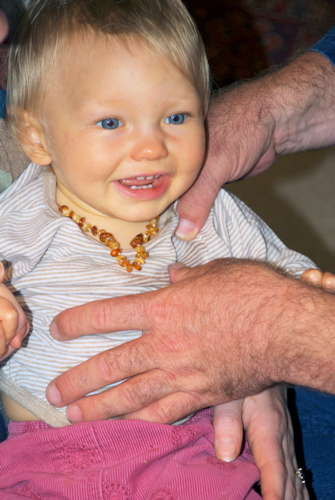 Oh ! In the early 1980s, I was working with Kay Coombes who was a language therapist, trained in Bobath Physiotherapy [i]. She had specialized in babies with cerebral palsy and other developmental problems. I was filming her while she stimulated the nutritional reflexes by touching all around the mouth. I noticed that the effects of stimulation traveled much further down the body, following the line of the Stomach meridian. In fact, she touched the stomach point 4 which is supposed to be a reflex at the head. That was the case, but there was also a reflex in the lower body. This went completely against what science thought at the time. Science said that by touching an area close to the mouth, the mouth would react and it was true. But no one expected another reflex to appear lower in the leg or foot. This was the first clue that allowed me to understand the existence of the link between reflexes and meridians. We repeated this test over several sessions and then with more and more children, and it worked systematically. The meridian of the stomach was the first I studied in this manner.
Oh ! In the early 1980s, I was working with Kay Coombes who was a language therapist, trained in Bobath Physiotherapy [i]. She had specialized in babies with cerebral palsy and other developmental problems. I was filming her while she stimulated the nutritional reflexes by touching all around the mouth. I noticed that the effects of stimulation traveled much further down the body, following the line of the Stomach meridian. In fact, she touched the stomach point 4 which is supposed to be a reflex at the head. That was the case, but there was also a reflex in the lower body. This went completely against what science thought at the time. Science said that by touching an area close to the mouth, the mouth would react and it was true. But no one expected another reflex to appear lower in the leg or foot. This was the first clue that allowed me to understand the existence of the link between reflexes and meridians. We repeated this test over several sessions and then with more and more children, and it worked systematically. The meridian of the stomach was the first I studied in this manner.
So first there was experience, and then theory. Have you ever written a book about it?
That’s a very good question ! (Laughs). I’ve been trying to write a book about it for almost 20 years. Whenever I am almost at the end, I find new materials, or I discover something new and even more precise. If you are interested in my research, I have already posted a lot of articles on my website (link). But for the book you will have to wait a little longer.
Thank you very much for your time.
Thanks to you too.
———-
References :
[1] The BOBATH or NDT BOBATH CONCEPT Concept is a concept of rehabilitation developed in the 1940s thanks to the work and research of Mrs. Berta BOBATH (1907-1991), physiotherapist and her husband Doctor Karel BOBATH (1906-1991), neurologist.
Today, the NDT Bobath Concept is a way of thinking and taking care of babies, children, adolescents and adults with cerebral palsy (Cerebral Palsy) and other motor neurodevelopmental disorders.

